Selaco is an extraordinary shooter that does backflips with the Doom engine
New Dawn.
Selaco describes itself as a first-person shooter inspired by 1993's Doom and 2005's F.E.A.R. But to be perfectly honest, I think that undersells it. This wildly ambitious retro FPS plays like a potted history of the genre's golden age, melding all manner of ideas that emerged between the two key texts it cites as inspiration. The holistic worldbuilding of System Shock. The playful interactivity of Duke Nukem 3D. The crisp set-piece design of Half-Life. Selaco blends them all into a smooth, unctuous action experience. It's already one of the best retro shooters out there, and the damn thing's only a third finished.
You play as Dawn, a Security Captain aboard the titular Selaco (which I think is pronounced Sell-a-co, but I habitually say Sil Acko because I am irredeemably northern). Selaco is a gargantuan space station designed to look, sound, and smell exactly like Earth in the year 2255, because actual Earth has been devastated by some unspecified cataclysm. Selaco is the primary home of the surviving human race, then, but now it has been struck with a disaster of its own, as it's attacked by a force of purple-blooded supersoldiers.
None of this is clear at the game's start, however, with Dawn awakening in the guts of Selaco's Pathfinder Memorial hospital (following treatment for, amusingly, a pulled hamstring), which is already under heavy assault by heavily armed goons. The abrupt and somewhat unforgiving introduction sees you scrambling through the hospital's corridors as they rattle with nearby explosions, dodging gunfire as your enemies hunt you down. After a minute or two of breathless evasion, you finally pick up a weapon, moments before the soldiers kick down the door of the room you've just crawled into.
From here, two things quickly become clear about Selaco. The first is that its combat is ferocious. The starting assault rifle kicks like a startled mule, spraying blazing yellow tracer bullets that rip up the environment, shattering glass, shredding boxes, and filling the air with concrete dust. Explosive weapons can rip whole chunks out of the level, leaving ragged, rebar-riddled holes in the geometry. Enemies are particularly squishy, losing arms, legs, and heads to sustained gunfire, or outright exploding in puffs of purplish goo. It stretches credulity that Selaco is built in GZDoom (a third-party sourceport of Doom's original engine).
The second thing you'll notice is that, despite its messy spectacle, Selaco isn't a mindless run-and-gun affair. If you try to play it this way, you will quickly become either A) dead or B) lost. One of the main ideas Selaco draws from F.E.A.R is enemy AI that tries to out-think you. Selaco's goons are cunning little scamps, deploying evasion tactics, trying to flank you, or flush you out with grenades.
I don't know whether Selaco's enemies are smarter than F.E.A.R's, but they definitely feel nastier. Despite their intelligence, F.E.A.R's enemies always felt like they were locked in a room with you (perhaps because of its bullet-time mechanic). In Selaco, you're definitely locked in with them. They're extremely aggressive, closing on you like an estate agent who's just had a visit from the bailiffs, and even the most basic goon can utterly shred your health counter if they get to point-blank range. Their radio chatter is also more manic and hostile. You really get the sense these bastards want to murder you.
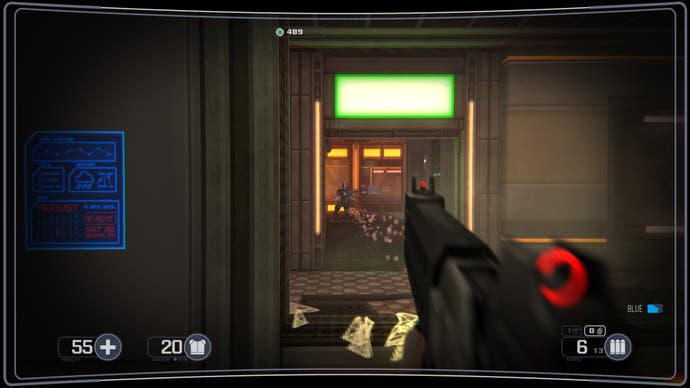

Hence surviving gunfights requires you to think as fast as you move. You must try to pre-empt enemy tactics, use cover as much as you can, lay traps with mines and explosive objects, and ensure you're using the right weapon for the right situation. While Dawn may not have the luxury of bullet time, she can propel herself into an incredibly powerful slide. Not only can she punt enemies into walls and hazards for cheap kills, she can also use this to get out of Dodge fast.
Combat, then, is as cerebral as it is satisfying. But Selaco also demands brainpower outside of battles. Its levels are vast, knotty affairs, often comprising multiple maps that interweave in ways that can take literal hours to unpick. As we recently saw in Wrath: Aeon of Ruin, big levels do not necessarily make for great FPS play. But where I found Wrath's levels frequently exhausting, Selaco's are a joy to explore.
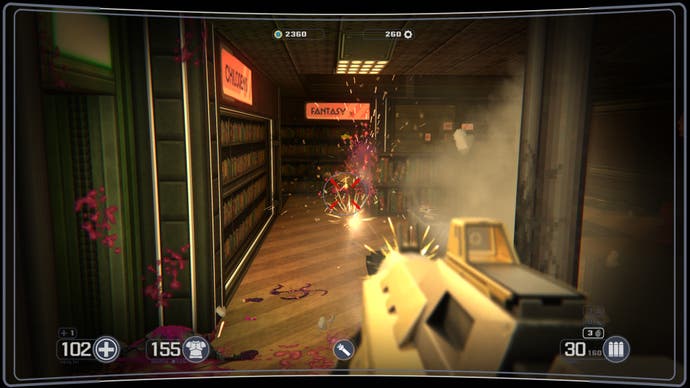
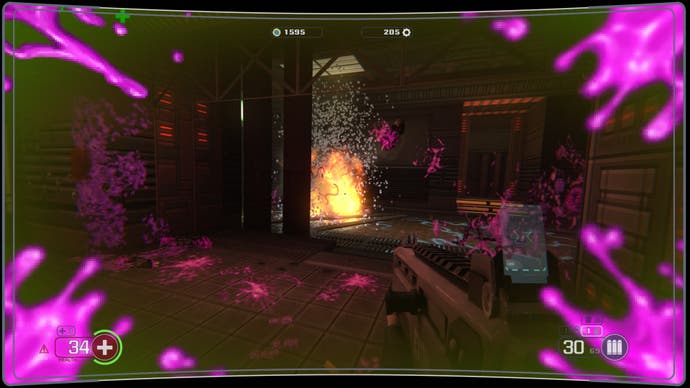

There are several reasons for this. Selaco's levels are all part of a contiguous, convincingly built world, one that feels functional and lived-in. One wing of the hospital, for example, has very recently been the venue for a birthday party, with confetti covering the floor, and uneaten cake that Dawn can gobble up for little bursts of health. Meanwhile, the game's story and background is drip-fed to you in concise, humanly written text logs. Its worldbuilding is slightly undermined by the prevalence of memes and other references to Internet humour (such as graffiti that says 'Cooka da Pizza'), but admittedly, such irreverence is as much a part of 90's shooters as gibs and keycards.
Moreover, Selaco places equal emphasis on puzzling as it does on combat. You're constantly pursuing circuitous routes to track down keycards, reactivating power systems to access new areas, or shuffling around explosive canisters to blast your way to the next room. This includes dozens of secrets and optional areas that constantly tempt you off the beaten path. Like a Victorian urchin in front of a confectionary, you're constantly pressing your nose against the windows of locked rooms, scanning for clues to how to enter. You might see an open air duct that suggests the other end is somewhere nearby, or spy black scratches on a wall that imply it can be destroyed with explosives. Rooting out these hidden areas is a game in itself, and an enormously rewarding one at that.
Selaco's smartest design decision, however, is how clearly it delineates between combat and exploration. This isn't a shooter where every corridor is crammed with enemies, and the periods between gunfights can be surprisingly long. Instead, most combat scenarios are carefully crafted set-pieces, often sprinkling their own twists and ideas into its dynamic, destructible fighting arenas. One example, taken from the game's second level, sees you defending a tactical assault where enemies breach the room you're in from multiple angles. They smash through the walls, blow through the ceiling, cut through the closed metal shutters with a blowtorch, each phase giving you just enough time to prepare for the next wave. Another involves battling in and around a fast-food restaurant at the centre of a huge car park, tossing knives from the kitchen area at enemies for a quick kill.
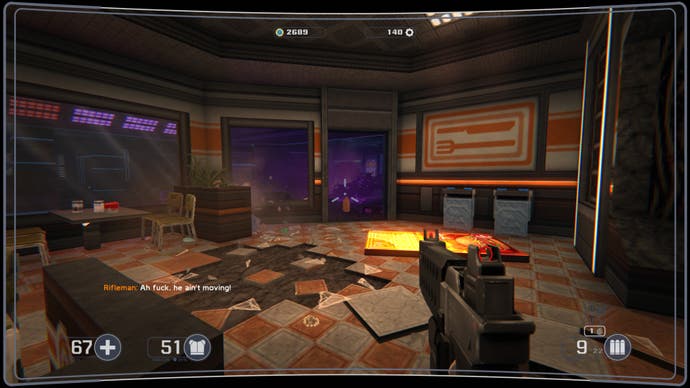
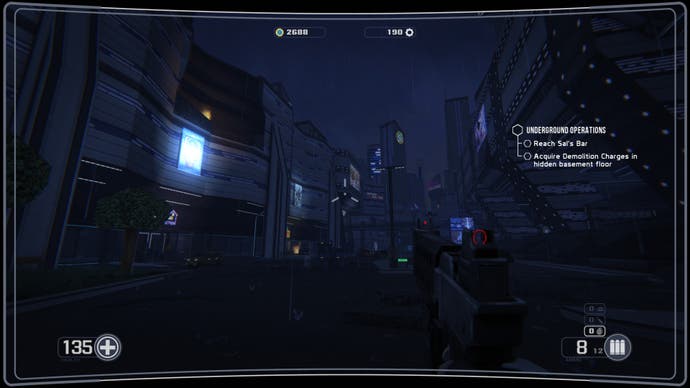
Combined, these ideas engender deeply satisfying ebb and flow to every level. You'll scrape through another tooth-and-nail battle, Dawn battered and bloodied, which prompts you to keep watch for secrets and hidden goodies as you press forward. This, in turn, prepares you for the next explosive encounter, the level cluing you in as you hear enemy soldiers setting up an ambush ahead.
This isn't to say the game executes its ideas perfectly. The biggest mistake it makes is that the first level is the hardest to navigate, with later levels either being more open or more compartmentalised. This can make for an overwhelming initial hour, though it does ensure you're prepared for what's to come. Also, while I think the pacing of the game is pretty good, there are a few areas where the gap between battles is slightly too long.
Honestly though, these are my only real complaints. There are also a whole bunch of cool features I'm yet to mention, like the absurd amount of environmental interactivity, which lets you gets hands on with everything from light-switches to the hand-dryers in the bathrooms. Selaco also includes an array of subsidiary systems, like an "Invasion Tier" system whereby enemies become more dangerous over time, equipped with new items like shields and cluster mines. Alongside this is a fairly involved weapon upgrade system that lets you gradually turn your basic shotguns and assault rifles into more creatively destructive firearms. There's even a Dead Space-style in-game subway that connects all its levels, letting you travel between them to search for more secrets and unlock doors that were impassable on your first run.
As is traditional with retro-shooters, Selaco has released into Steam early access with only the first of three episodes available. But that episode is comfortably the best shooter I've played this year so far, with more than enough to it to make it worth investing in at this stage. I genuinely don't know what Altered Orbit Games could add in future episodes. But you can bet your last bullet that I'll be there to find out.


